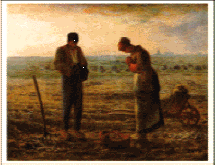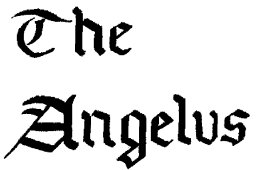


NOVEMBER 29, 1588, AND
THE DESTRUCTION OF THE INDESTRUCTIBLE ARMADA
Spain, with the blessing of the Pope, was at war with Protestant England. Two years before the execution of Mary Stuart in 1587, the Spanish king had begun building the largest and most formidable navy that had ever sailed the sea. His purpose was to invade "heretic" England and to bring it under the control of the Roman Pontiff. Wherever shipbuilders were to be found, whether in the West Indies or in America, Philip II searched them out, and conveyed them to the shipyards. From the coast of Portugal to Naples, to Venice and Genoa, and On to Sicily Ėall was converted into one vast shipyard. In 1587, Sir Francis Drake had warned his country of Spainís enormous preparations, and he declared, "There will be 40,000 men in weigh ere long, well equipped and provisioned."
The Pope had excommunicated Queen Elizabeth and declaring her "illegitimate" and a "usurper" of the English throne, he gave it to Philip whom he called the "Defender of the Christian Faith." Philip was to hold it as "tributary and feudatory to Rome."
On May 28th, 1588 the first galleons were launched. For three days the ships put to sea. The Armada consisted of 130 ships in addition to transports --150 vessels in all. Sixty-four were galleons, the largest ships built at the time. One weighed 1500 tons, and another 1200 tons. Several weighed lO00 tons. A total of 60,000 tons set sail. Their ribs were lined with planks 4 feet thick, and were believed to be bullet-proof. The twelve principal ships had been baptized with the names of the 12 Apostles. The "St. Peter" led.
On board the Armada were 8000 sailors, and 25,000 soldiers; 2000 galley slaves, and Don Martin Allacon, the Administrator and Vicar General of the "Holy Office" of the Inquisition; and 290 monks and priests. In addition to carrying 2650 cannon, and provisions for six months, the holds of the ships carried instruments of torture to suppress the English "heretics" who dared defy the authority of Rome. The Pope, Sixtus V, had given Philip 1000 ducats to equip the fleet and promised him one million crowns more. The Spanish king himself had invested 50,000 ducats and held another 2 million in reserve. The fleet had been blessed by the Pope, "Christís Vicar on Earth."
The plan was that Alexander Parma, Spainís greatest general, would rendezvous with the Spanish fleet with an army of 100,000 more troops from the Spanish Netherlands, and at a given signal, he would stake a massive invasion leading the victorious army in a triumphal march into London. It had been rumored abroad, however, that the year, "1588" was to be a year "most fatal and ominous unto all estates," and the death of the Marquis Santa Cruz on the eve of the embarkation cast an inauspicious sign upon the ill-fated campaign. He was Spainís ablest ship-captain with 30 years experience, and who had been appointed to command the Armada. Thus the "Iron Duke," as he was called, was replaced by the Duke of Medina Sidonia, who on account of his vast wealth, was known as "The Golden Duke." Before the Armada could make the English coast, one galleon sank and two other ships were lost to the shores of France when a gale arose.
On Friday, July 29th, the first ships were sighted off the southwestern coast of England known as the "Lizard." Their crescent formation stretched for 7 miles! Beacon fires blazed the alarm from Lizard to Falmouth, to Dodman Point, to Griffin Head and to Rame Head. When the news reached Plymouth, Sir Francis Drake was bowling on the green behind the Pelican Inn. He was in the company of Lord Howard, Englandís High Admiral, Sir Walter Raleigh, Sir Richard Grenville, Martin Frobisher, and others. When the messenger came announcing the approach of the enemy, Drake, whose turn it was, calmly replied, "There will be time to finish the game, and then we will go out and give the dons a thrashing." By evening 60 ships sailed out of Plymouth Harbor in defense of their countryís independence, and the freedom of religion.
The Royal Navy numbered only 28 ships. The Royal Army numbered 87,000 men, Wales numbered 45,000, and London readied 20,000 more. These forces were divided into three armies. A force, 22,000-foot soldiers and 2000 cavalry, was stationed at Tilbury under the Earl of Leicester to defend London. The Queen herself appeared here on horseback in military regalia, and declared she would rather die in battle than survive the ruin of the Protestant and the slavery of her people. A second army of 28,900 men was set in defense of the Queen; while a third force of 27,400 heavy horse and 1900 light cavalry were to guard the coast at points deemed likely for the invasion. The Queen dispatched 34 ships with 6000 men. London provided 30 more ships.
Lord Howard was to sail the Channel with 17 ships, while a second squadron of 15 ships under Lord Seymour was sent to Dungenness to intercept Parma. Drake commanded 30 privateer ships.
The English fleet sailed down the Channel, but not until the next day did they sight the Spanish galleons through the haze. The first encounter did not occur until Sunday, July 31st, off the coast of Plymouth. It was the first of three such gun duels. The light English ships would fire a shot, or a broadside, then retreat sailing into the eye of the wind; then return to torment and cripple the invaders. They were able to discharge 4 shots to every one the Spanish could discharge. The bulky, unwieldy galleons could not compete with the smaller, English ships which escaped at will out of the range of their guns. When the Spanish tried to engage in a pitched battle, the English commanders politely declined, and continued to nip the heels of the galleons. Boats came from port carrying men and supplies to reinforce the English fleet, and as night fell, beacon fires were set to show where the battle raged.
Suddenly, the "Capitana", the largest, most luxurious ship in the Armada, collided with the "Santa Catalina." Pedro de Valdez, Commander of the "Capitana" was the only Spanish officer in the Armada who was well acquainted with the English Channel. Also on board was Vice Admiral Juan Martiuez de Recaldo. Martin Frobisher cannonaded her until night. In the morning she surrendered to Drakeís ship the "Revenge" and was towed into Torbay. The prize contained tons of gunpowder and much treasure, and both Captain de Valdez and Vice Admiral de Recaldo hostages.
When the captain of the rear galleon chided his master gunner for the events of the day, the gunner, a Fleming, went to the powder magazine and thrust in a burning match, as he leaped through the porthole into the sea. The ship exploded carrying the paymaster and 200 soldiers into the air. The hulk remained, and was seized by the English in the morning with its treasure and much ammunition that had not ignited. Thus on the first day of battle the Armada lost two flag ships, 450 officers and men, the Paymaster, and l00,000 ducats in gold!
On Monday, August 1st, Lord Howard aboard "The Ark" was in pursuit of the galleons, but Tuesday, when the Armada lay off St. Albans Head, the wind shifted to the northeast forcing the English ships to sail seaward. By Wednesday, Lord Howard and the "Ark" was again in pursuit, and on Thursday, the Spanish fleet lay off the Isle of Wight. They engaged in fight with ship after ship, but were unable to board the ever-attacking, ever-fleeing "heretics." Admiral Oquendo sailed under the bow of the "Ark" and rendered Lord Howard rudderless, but when six galleons closed in to board her, her own boats towed her to safety. The saintly names of the Spanish ships offered no protection, nor victory, and the Armada sailed toward Calais. The English receiving men and munitions from shore were waiting to be joined by Lord Seymour and his squadron of 16 ships before pursuing.
On Saturday, August 6th, they found the Armada off Calais, lying at anchor in formation of a crescent. The Spanish too were waiting --waiting to be joined by Parma and his forces before inflicting a fatal bow upon the English. But Parma had written repeatedly to Philip and to
Medina Sidonia that the Dutch fleet had sealed off all Spanish ports in the Netherlands, and had urged Sidonia to use the Armada to cut a path and give escort to his forces. The English decided that on Sunday the time had come to attack. In the dead of night eight ships were chosen;
their masts smeared with pitch; their holds filled with gunpowder and any other combustibles and were sent drifting amidst the Armada. Because the night was overcast and the winds rising, they were hardly discerned before they emerged from the darkness and burst into flames. The terrified invaders cut their cables and put to sea away from the shallows of Calais and the quicksands of Flanders. Mondayís dawn revealed the Armada was disabled. Some ships were sailing for the Netherlands, and the English pursued overtaking them at Gravelines. They attacked before the Spanish could reform. They sailed through the vanguard shredding sails and rigging. Four vessels ran afoul and three sank. Several more were left to drift helplessly toward the sandbanks of Holland. The Spanish had already lost 16 of its best ships, and between 4000 and 5000 soldiers, while the English had not lost a single ship and had suffered no more than l00 fatalities. The English being short of munitions sailed for the Thames. Drake pursued for a day though his ammunition was spent.
The Armada was seen fleeing into storm clouds and waters made treacherous by rocks, shallows currents, and whirlpools. The winds dashed several ships on the Shetlands; then swept by currents, many more were left as wrecks on the Orkneys. They rounded Cape Wrath and found themselves amid the treacherous Hebrides. Their crews were too weak from lack of food and water to swim. They were driven along the coasts of Scotland and Ireland. In desperation, they sent boats ashore begging food and water. Then a storm rose that lasted 11 days. Thirty-eight ships were left on the Irish coast including Admiral Oquendoís great galleon.
Few vessels survived to return to Spain. When news of the Armadaís failure reached Rome, a satire was posted in which the Pope was made to offer l000 years indulgence to anyone telling the whereabouts of the fleet --whether it had been taken to Heaven, or had descended to Hell; or was hanging in mid-air! The Pope refused to pay the million Crowns he promised to Philip, and lost his power against the Protestant church. Spain bore the loss estimated at 6 million ducats, and though Sidonia survived, he was nearly the only noble to do so. A cry rose to Heaven from the families of Spain. Queen Elizabeth and in the United Provinces, the States-General, set aside November 29th, 1588 as a day to repair to Churches and by fasting and prayer to render thanksgiving to God "for the recent, wonderful dispersion of the Spanish fleet which had descended upon the coast of England with the object of conquering the Kingdom and bringing it under the tyranny of the pope." (See: Exodus 15:1,9,10)